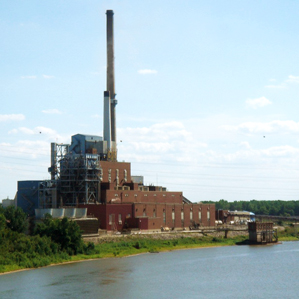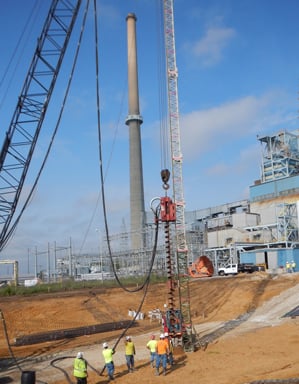Construction Begins at a Carbon-Capture Plant, but Will It Ever Be Completed?
After a decade of stop-and-start efforts and a $1 billion federal pledge, construction of the country’s most hyped project for capturing carbon dioxide from a coal-fired power plant and storing it underground has finally begun. But even now, the project, called FutureGen, faces hurdles. An environmental group has brought a lawsuit against the project that threatens to undermine the additional funding needed to see the job through.

Construction work began last week on a new chimney foundation that’s part of a planned retrofit of an old coal plant in Meredosia, Illinois. The retrofit will render the plant capable of capturing carbon dioxide instead of spewing it into the air—technology that could vastly reduce the greenhouse gas footprint of coal. If the retrofit is completed, the result will be a plant that will burn coal in a stream of pure oxygen, creating an easy way to separate at least 90 percent of the carbon dioxide emissions so that it can be piped underground and stored there permanently.
The start of construction reflects another milestone: the U.S. Environmental Protection Agency announced last week that it had granted the project the first-ever underground-injection permit for carbon dioxide. This allows for compressed, liquefied carbon dioxide to be stored in a geologic saline formation 4,000 feet underground near Jacksonville, Illinois.
But the Sierra Club, an environmental group that hopes to stop all coal use, has filed a lawsuit challenging a permit from the Illinois Environmental Protection Agency relating to air discharges from the project. FutureGen CEO Ken Humphreys, who declined an interview request, said in a statement that the lawsuit is causing investors to balk at funding the other $650 million of the $1.65 billion project. In addition, the project faces a September 2015 deadline to use or lose $1 billion in federal stimulus funds set aside in 2010 under the American Recovery and Reinvestment Act.
The repeated delays for FutureGen show how grim the bigger picture is for projects aimed at capturing and burying carbon dioxide. The International Energy Agency estimates that to make any dent on slowing the emissions that cause climate change, such storage activity must increase more than a hundredfold worldwide in the next 15 years or so—far beyond what’s being planned or constructed right now (see “Will Carbon Capture be Ready on Time?”).

Today the only carbon capture happening in the United States is at one small demonstration unit that handles part of the emissions at the Plant Barry Power Station in Mobile, Alabama. About 25 other capture and storage projects are in planning or construction stages at power plants around the world. Beyond power plants, a number of other existing projects pump carbon dioxide into the ground to help force more oil out of wells, a process called “enhanced oil recovery.”
FutureGen was originally conceived in the most recent Bush administration as a way to produce hydrogen. The emphasis now is on demonstrating carbon sequestration at a large scale (see “FutureGen Rises from the Dead”).
The project has three main parts: a new retrofit of an existing coal plant with new oxy-combustion technology; a 30-mile pipeline to transport carbon dioxide; and finally an underground storage facility for holding the compressed gas. “This is the world’s first commercial-scale demonstration of capturing carbon dioxide using oxy-combustion, and would nicely complement other [carbon capture and storage] projects coming online,” says Howard Herzog, senior research engineer with the MIT Energy Initiative and an expert in the technology.
Keep Reading
Most Popular
Large language models can do jaw-dropping things. But nobody knows exactly why.
And that's a problem. Figuring it out is one of the biggest scientific puzzles of our time and a crucial step towards controlling more powerful future models.
How scientists traced a mysterious covid case back to six toilets
When wastewater surveillance turns into a hunt for a single infected individual, the ethics get tricky.
The problem with plug-in hybrids? Their drivers.
Plug-in hybrids are often sold as a transition to EVs, but new data from Europe shows we’re still underestimating the emissions they produce.
Stay connected
Get the latest updates from
MIT Technology Review
Discover special offers, top stories, upcoming events, and more.